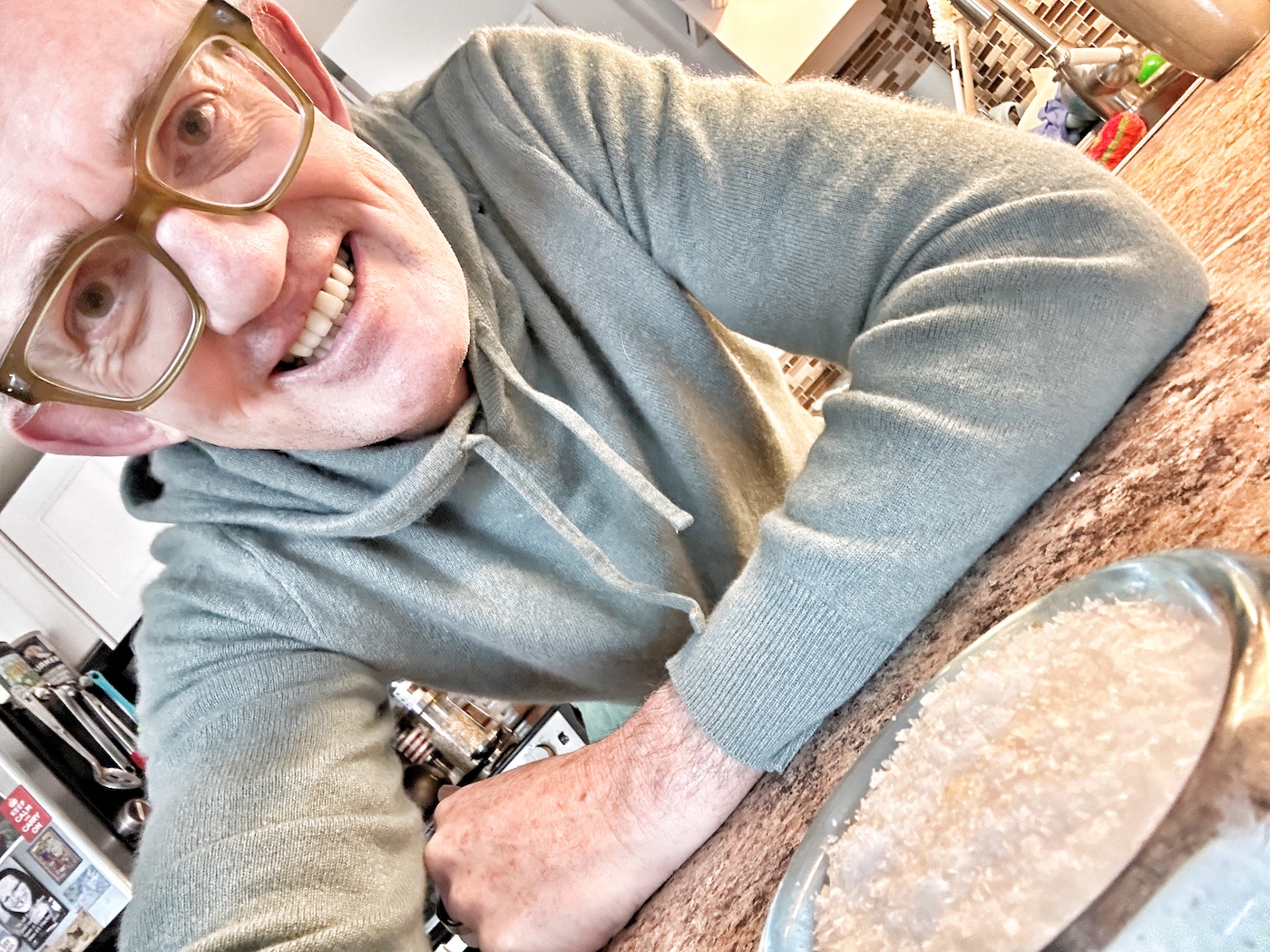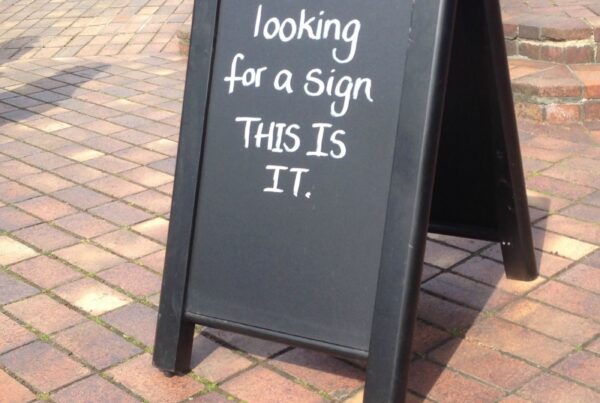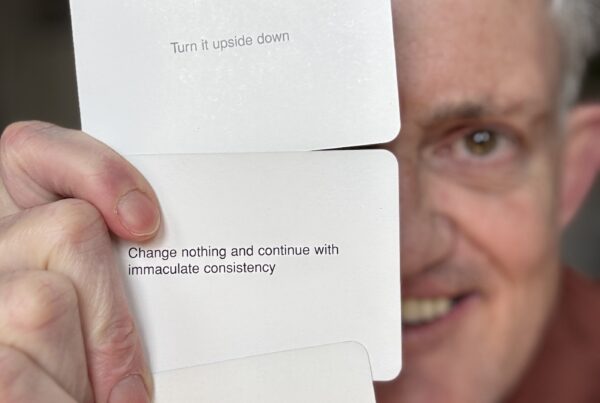
Salt: Maldon. Pinch bowl: Scandinavian crystal “borrowed” from my parents.
How to season your life
An article in the New York Times, a primer about salt, which, by the way, I found through Jason Kottke’s perpetually fantastic newsletter, had this quote:
Steve Osborne, whose family has owned Maldon Salt for four generations, calls salt making “the art of time and temperature.”
As you well know, I’ve never stumbled across a metaphor that I didn’t love and immediately attempt to wrestle into submission and use for my own purpose. Salt…
(which shares the same etymological root as “salary”, as it was once valuable enough that Roman soldiers were paid partially in salt; which, as an aside, is a transaction that doesn’t seem to work in 2024 … “No Michael, a baggie of fleur de sel does not count as my end of year bonus.”)
… is no exception.
Time and Temperature
Types of time
I had a conversation with my mum last night. She was talking about buying a gold watch for a grandchild’s 21st birthday, because that had been her Big Present from a grandparent when she met that milestone.
I told her I didn’t wear a watch, and hadn’t for at least twenty years; and that people who did now often wore them as self-expression, as jewelry, rather than as a pragmatic tool.
She was quite shocked. But now we’ve all got phones in our pockets, we not only don’t need watches, but our relationship with time seems to be more ambiguous than it once was.
On the one hand, we always know exactly what time it is. Glance at the phone. Glance up to the right-hand corner of your computer screen, and there we have it.
On the other hand, the infinity pool nature of so many apps on the phone means we’re always being pulled into a place where boundaries of time and space break down.
If my life is in part defined by my artistry of time, then …
Lifetime minus ten. Peter Attia’s book Outlive is a helpful and somewhat sobering read. The bottom line: you should be doing all you can now to get fit (physically, mentally, relationship-ly) for the last decade of your life. It’s that last decade when things fail and potentially become miserable. Train hard now, so those last years are easier.
Ten years. I long ago abandoned fantasies that I could create three- or five- or ten-year strategic plans. My track record was so bad at any of those works of fiction coming true that it didn’t seem worth the effort. But this year, I’ve declared that my ten-year goal is to sell 10 million copies of my books. (It was provoked by reading the book 10x is Easier Than 2x … a book you don’t have to read because the title tells you all you need to know.) That feels very much like a Worthy Goal: Thrilling, Important, and Daunting. I’ve no real idea how to go about this, but I like that it’s a singular, big bold purpose to shape the years of 2024-2033.
Six weeks. This is the time cycle we use in The Conspiracy, our membership where people work on their Worthy Goals. I got the idea broadly from the agile project management movement, and specifically from the team at 37 Signals and this book (free pdf) in particular, which describes their “Shape Up” development process. Six weeks is a time when you can make big progress on something that matters … and also, if you don’t make progress for six weeks, it’s not the end of the world.
One week & one day. As someone who chronically overcommits and has too many things in his calendar and to-do list, the journaling exercise I do to name my “one thing” at the start of the week and at the start of each day helps me remember that it’s not the number of tasks I do but the choice of the work I do that is most likely to move forward the stuff that matters.
A final thought about time. Your calendar tells you what is important to you. You can talk about values, jazz-hand yourself about priorities, but your calendar is a mirror to your actual priorities.
Types of temperature
As you read this, I’ve left chilly Canada for summer in Australia, off to have an adventure walking in Tasmania with two of my closest friends. As I write this, I’m pretty excited to be trading a beanie/toque for a sun hat, a winter coat for bathers.
But for this discussion, I’m thinking of temperature for cooking. I suspect many of us use the same “cooking heat” for everything we do. Let’s call that “a moderate oven”. Moderate. That says everything: reasonable, solid, uncontroversial, safe.
But there are two other temperatures that come to mind and might be useful as we think about the craft of our lives.
Low. My dad made an incredible dish, a riff on Potatoes au Gratin, which, because we’re not French, we called “cheesy potatoes”. The secret was the onions, vast amounts of onions, that he’d reduced to a brown, sweet, gooey mess. It was a first lesson for me in what happens when things go low and slow. Structures evolve, and stuff melts, eases, relaxes. You find sweetness where before there was none. There’s richness and there’s depth. You find the essence of things. (See above re: “no metaphor I won’t over-work”.)
Flash Heat. Queen Margherita Pizza opened in Toronto in 2010, and it marked the pizza revolution in this town. We’d travel for an hour on the streetcar to get to the restaurant where the Neapolitan pizza oven was 850 degrees F, and the pizza took 90 seconds to cook. It’s the Big Bang of taste, an explosion of slightly charred crust, melted cheese, and general deliciousness. Things have to be simple for this to work, perhaps as simple as cheese, great tomatoes, and a leaf or two of basil. But find the essence of your ingredients, and the intense heat makes magic.
Want The Works in your inbox? Sign up (free) here




